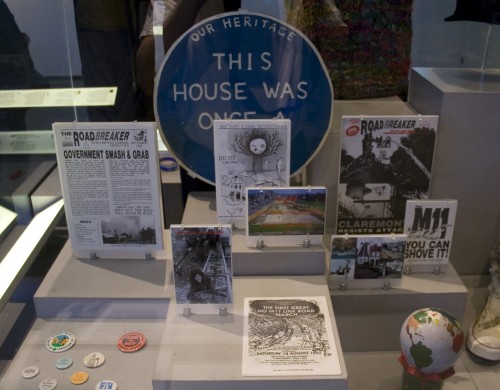On this morning 20 years ago a tree was cut down. Not just any tree mind you, it was The Tree, a tree that gained The definitive article as it became the centre ground for an environmental struggle against a new road building programme.
The 250 year old chestnut tree had been thought to have been saved as planners for a major new road in the area had agreed to a tunnel underneath the local green in Wanstead.
However. victory turned to horror as while a tunnel would be built, it wouldn’t snake under the green in Crossrail style tunnelling machines, but would be sliced out of the ground, from the top down, and a lid put over the gaping wound — a cut and cover tunnel.
Such a method of construction would wipe clean the landscape, and right in the middle of the route stood a tree – The tree in fact, and on the 7th December 1993, it was finally torn down.
The cause of the turmoil was a road project that dated right back to the 1960s as part of the London Ringways idea, and was variously refined and modified until a plan was finally approved in 1989 known as the M11 Link.
Along the route a large number of homes had become derelict over the years due to the blight caused by the road building project these were to be demolished — but were also home to a large number of the more, ahem, artistic natured sorts of people.
In early 1993, as demolition work was due to start, protests and sit-ins became common-place. A lot of the sit-in protests and occupation techniques used later by the likes of Swampy were first honed on this site. In pre-internet days, a local newspaper was printed and a few copies are in the Museum of London.
However, what was still very much a local protest movement gained far wider attention when “outsiders” arrived, and targeted a chestnut tree as their cause celebre.
Various legal attempts were made to stop the tree being cut down, including sending a letter to a tree house that had been built in its branches, which it was claimed gave the tree a formal address — it even became reputedly the only tree to have its own postcode, E11 1AA (although actually, that’s the local post office).
Although initially barricaded by the construction company, protesters managed to get past and had occupied the tree, which was no longer a tree, but The Tree. The focus of attention.
But, eventually, as so often happens, the protests ran out of time and in a heated battle which is still disputed by all sides, the police moved in on the morning of the 7th December.
It took the police two hours to to get through the crowds to the base of the tree & two hours more to cut loose the seven people who were locked around the trunk with their arms held hand to hand in heavy steel tubes.
A cherry picker had been brought in to remove the tree house and its occupants.
Around lunchtime, a mechanical digger was brought in under police escort and rammed into the tree, finally bringing an end to the protest.
A 24 minute film about the protest was later made, with some good archive newsreel footage and interviews.
The road itself was completed in late 1999, and the tunnel got its roof, so that George Green did avoid having a massive road next to it as promised. But the scar is still there, and visible in the land.
The remains of the tree stump was retuned to the site, and sat there decaying for a good few years until it was removed to a safer place in 2010. Plans to carve the remains into a memorial park bench didn’t come to much in 2011
I am not sure what has happened to it since.
The battle can be seen as a loss for the environmental groups involved, but much as the loss of the Euston Arch mobilised the heritage lobby to fight harder afterwards, the loss of the chestnut tree fired up the environmental lobby in the same way. Later protest actions against motorways, and today’s mass campaigns against fracking are a direct legacy of that tree.
You know something, I think it would have been rather proud.








Thanks for this – I was only dimly aware of what was going on as I moved to another part of East London around that time, and this is a great account.
Thank you so much – do you know who produced the video as I would like to get permission to show it as part of an exhibition
Neil Goodwin made the films